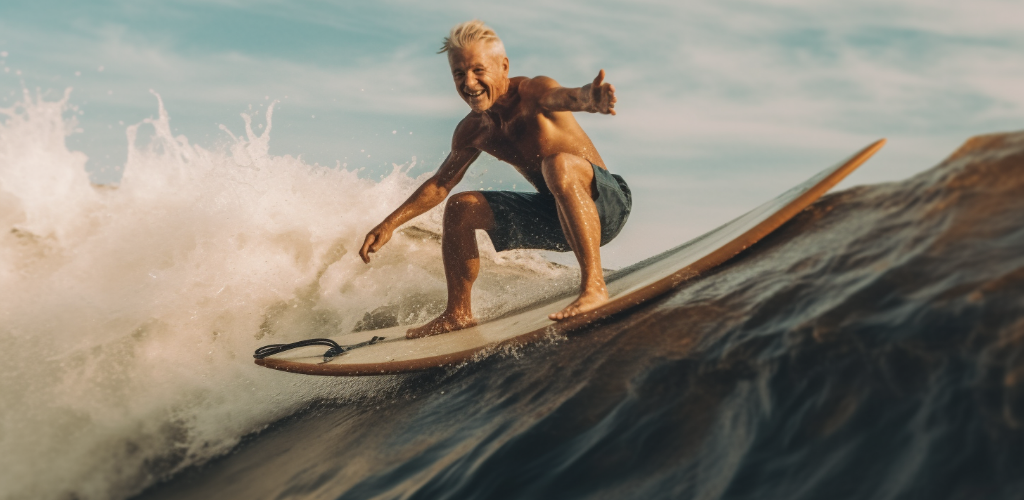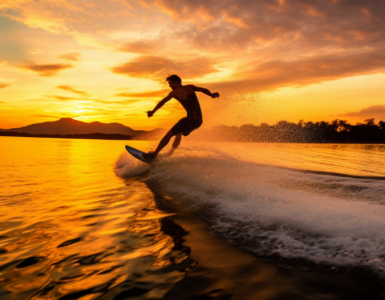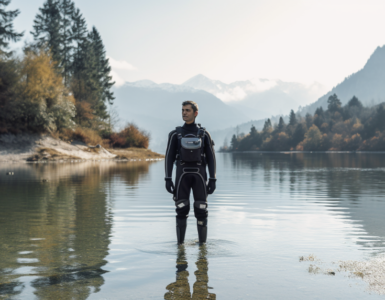Welcome, water sports enthusiasts and history buffs! Ever found yourself riding a wave and wondering about the origins of this exhilarating sport? Or perhaps you’re just curious about the rich history behind the thrill of surfing? Well, you’re in the right place. This blog post dives into the fascinating history of surfing, its evolution over centuries, and its journey from a cultural tradition to a globally beloved water sport.
So, when was surfing invented? Strap on your life jackets and let’s ride the waves back in time!
The Ancient Roots of Surfing
Surfing, as we know it, has deep roots that trace back to ancient civilizations. The earliest evidence of surfing dates back to antiquity, with the sport’s birthplace believed to be in the Pacific Islands. It was more than a leisure activity—it was a way of life, ingrained into the culture and lifestyle of the islanders.
Surfing as a Sacred Ritual
Did you know that early Polynesian societies revered surfing? Yes, it was considered a sacred ritual, a way to commune with the gods and nature. For these societies, riding a wave was an act of spiritual significance, showcasing a profound connection with the elements of water and wind. Imagine that—the thrill of surfing, coupled with a sense of divine communion! How amazing is that?
Evolution of Surfing through Centuries
Ever wondered how surfing has changed over the centuries? It’s quite the journey, starting from a ceremonial tradition, then morphing into a recreational activity, and finally becoming the competitive sport that we all know and love today. The evolution of surfing is a testament to human ingenuity, adaptation, and the never-ending quest for thrill and adventure.
Transformation in Equipment
One of the most significant aspects of the evolution of surfing is the transformation of the equipment used. Can you imagine trying to balance yourself on a heavy, unwieldy wooden slab? That was the reality for ancient surfers. But as time passed, these cumbersome boards evolved into the light, flexible, and highly maneuverable surfboards that we see today. The evolution, from wooden slabs to boards made of balsa wood, and finally to the modern day epoxy and fiberglass boards, is truly fascinating. The development of these boards has allowed surfers to push their limits and perform awe-inspiring maneuvers on the waves.
Surfing Spreads Across the World
Another intriguing facet of surfing’s evolution is how it spread from its birthplace to different corners of the globe. This was not merely a spontaneous occurrence. It was the result of tireless efforts by key personalities and events that helped popularize surfing internationally. From Duke Kahanamoku, an Olympic swimmer and a native Hawaiian who showcased surfing in Australia and the US, to the Gidget phenomenon that spurred a global surfing craze – the spread of surfing is a story of passion, adventure, and cultural exchange.
Surfing in Modern Times
In the 21st century, surfing continues to grow and diversify. With the formation of organizations like the World Surf League, surfing has gained recognition as a professional sport. Moreover, the surfing community today boasts an exciting mix of people from all walks of life, united by their love for the waves. Prominent surfers like Kelly Slater and Stephanie Gilmore have become household names, inspiring a new generation of wave riders.
Surfing competitions, too, have evolved dramatically. From local contests with makeshift judging systems, we now have international events with precise criteria and significant media coverage. It’s not just about riding the biggest wave anymore, but about the technique, style, and innovation that surfers bring to the water.
| Year | Milestone |
|---|---|
| Ancient Times | Surfing originated as a ceremonial tradition in Polynesia. |
| 1900s | Duke Kahanamoku popularized surfing in Australia and the US. |
| 1950s | The Gidget phenomenon sparked a global interest in surfing. |
| 1970s | Introduction of lighter, more maneuverable surfboards. |
| 2000s | Surfing recognized as a professional sport by the World Surf League. |
| 2020 | Surfing included in the Olympic Games for the first time. |
The Impact of Surfing on Society and Culture
Ever thought about how surfing has permeated our culture and society? It’s not just a sport, it’s a lifestyle that has influenced many aspects of our lives. From fashion to films, music to language, surfing has left its mark.
Let’s start with fashion. Surf style, characterized by casual and comfortable clothing, has become a global trend. The iconic board shorts, rash guards, and flip flops, once exclusive to surfers, are now seen on streets around the world. Surfing has indeed revolutionized the fashion industry. Can you imagine summer without these staples?
Surfing has also made significant waves in the world of cinema and music. Numerous films and documentaries, capturing the thrill and spirit of surfing, have been produced over the years. Have you ever heard of the Beach Boys? Their music, heavily influenced by the surfing culture, has become a symbol of California’s beach lifestyle.
Surfing and its Environmental Aspects
It’s no secret that surfers have a unique bond with nature. After all, the ocean is their playground. This connection often translates into a deep respect and concern for the environment. But did you know that surfing has significantly contributed to environmental awareness and conservation efforts?
Surfers are often at the forefront of advocating for the health of the oceans. They are among the first to notice changes in water quality, marine life, and coastal conditions. This intimate knowledge and connection with the sea make them vocal advocates for marine conservation and combating climate change.
Moreover, the surfing community has been making concerted efforts towards sustainability. From eco-friendly surfboards to beach clean-up events, surfers strive to protect the ocean and promote sustainable practices.
Noteworthy Surfing Destinations Around the World
- Banzai Pipeline, Hawaii: Known for its huge waves and hollow tubes, it’s one of the most famous and challenging surf spots in the world.
- Teahupo’o, Tahiti: Renowned for its heavy and hollow waves that break over a sharp coral reef.
- Jeffreys Bay, South Africa: Famous for its long, fast, and perfectly tubular right-hand point break.
- Gold Coast, Australia: Boasting some of the most consistent waves, it’s a favorite among surfers.
- Mavericks, California: Known for its cold water, dangerous waves, and great white sharks, it’s not for the faint-hearted.
These destinations represent just a fraction of the amazing surf spots around the globe. Whether you’re a seasoned surfer or a beginner, there’s a wave out there waiting for you. So, are you ready to ride?
The Future of Surfing
As we ride the wave into the future, what does it hold for this beloved sport? Well, like most things in our rapidly evolving world, technology plays a pivotal role. Imagine artificial wave pools that can produce perfect waves on demand, offering a consistent and accessible surfing experience. This is not a far-off dream but a reality that is already being implemented in some parts of the world. Isn’t that fascinating?
Moreover, the surfboard industry is also seeing a shift towards more eco-friendly materials. With the growing awareness about the environment, it’s not surprising that surfers are looking for ways to minimize their impact on the oceans they so love. Could we soon be riding waves on biodegradable or recycled boards? Time will tell!
Final Thoughts on the History and Evolution of Surfing
So there you have it – a journey through time tracing the path of surfing from its humble beginnings as a sacred ritual to a mainstream sport with a global following. It’s quite the tale, isn’t it? From the early Polynesian cultures to the modern artificial wave pools, surfing has continually evolved while still maintaining its core essence – the simple joy of riding a wave.
But more than just a sport, surfing has left a significant impact on our society and culture, influencing fashion, music, and even our awareness of the environment. Who knew that something as simple as riding a wave could ripple out to affect so many aspects of our lives?
- Surfing’s rich history: From ancient Polynesian cultures to the present, surfing has a rich and diverse history.
- The evolution of equipment: Surfing equipment has evolved significantly, with modern surfboards being lighter, more flexible, and even eco-friendly.
- Surfing’s influence: Surfing has influenced various aspects of society and culture, from fashion to environmental awareness.
- The future of surfing: The future of surfing looks promising, with advancements in technology and a growing emphasis on sustainability.
Whether you’re a seasoned surfer or a curious observer, the world of surfing is undeniably captivating. So why not give it a go? Experience the thrill, the freedom, and the connection with nature that surfing has to offer. After all, as they say, the best surfer out there is the one having the most fun!




